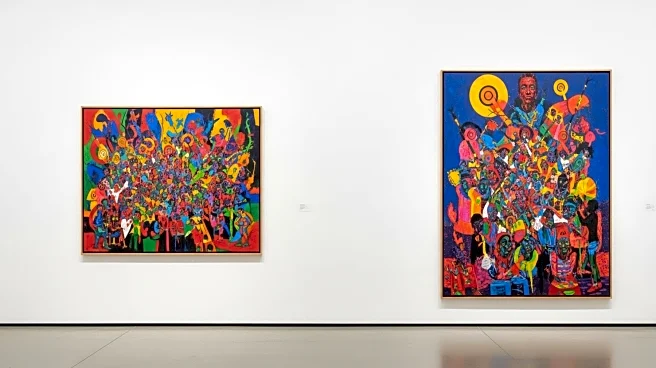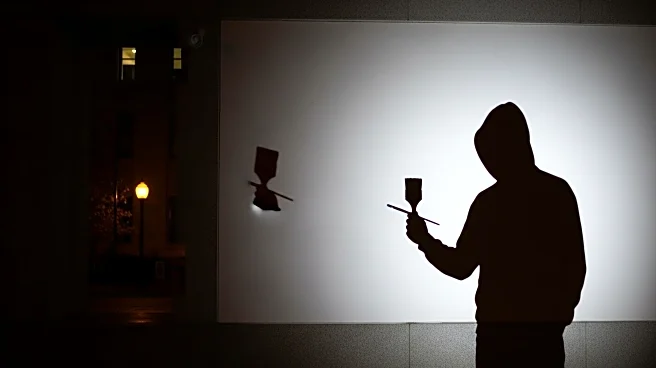What is the story about?
What's Happening?
Gabriele Stötzer, a German artist known for her defiance against East Germany's oppressive regime, is being celebrated in a solo exhibition at Muzeum Susch in Switzerland. Her work, which often features self-portraits and explores themes of female empowerment and resistance, was created under the watchful eye of the Stasi. Stötzer's art, largely hidden during her lifetime due to censorship, is now gaining international recognition. The exhibition showcases her unique style and the socio-political context that shaped her work, highlighting her role in the feminist movement within the GDR.
Why It's Important?
Stötzer's story is a testament to the resilience of artists under oppressive regimes and the power of art as a form of resistance. Her work not only provides a historical account of life in East Germany but also contributes to the broader narrative of women's rights and artistic freedom. The recognition of her art underscores the importance of preserving and revisiting works that challenge authoritarianism. It also highlights the ongoing struggle for artistic expression in regions where censorship remains a threat.
Beyond the Headlines
The exhibition at Muzeum Susch serves as a reminder of the cultural and political barriers that artists like Stötzer have faced. It raises questions about the role of art in social change and the responsibility of institutions to support marginalized voices. The resurgence of interest in Stötzer's work may inspire similar rediscoveries of other overlooked artists from repressive backgrounds.
AI Generated Content
Do you find this article useful?
















